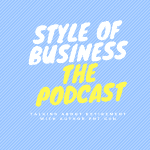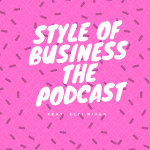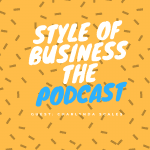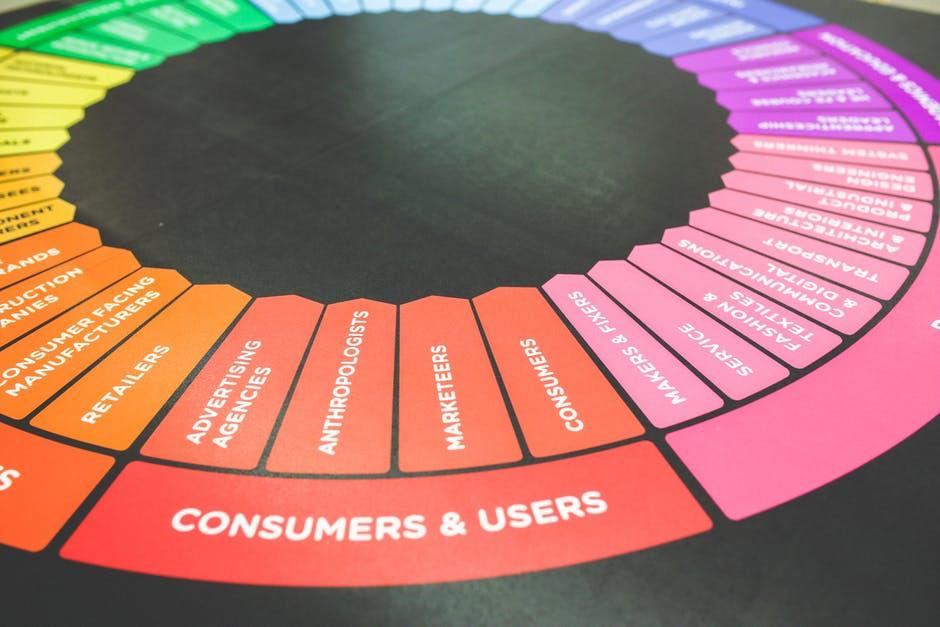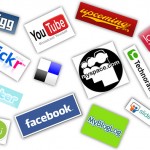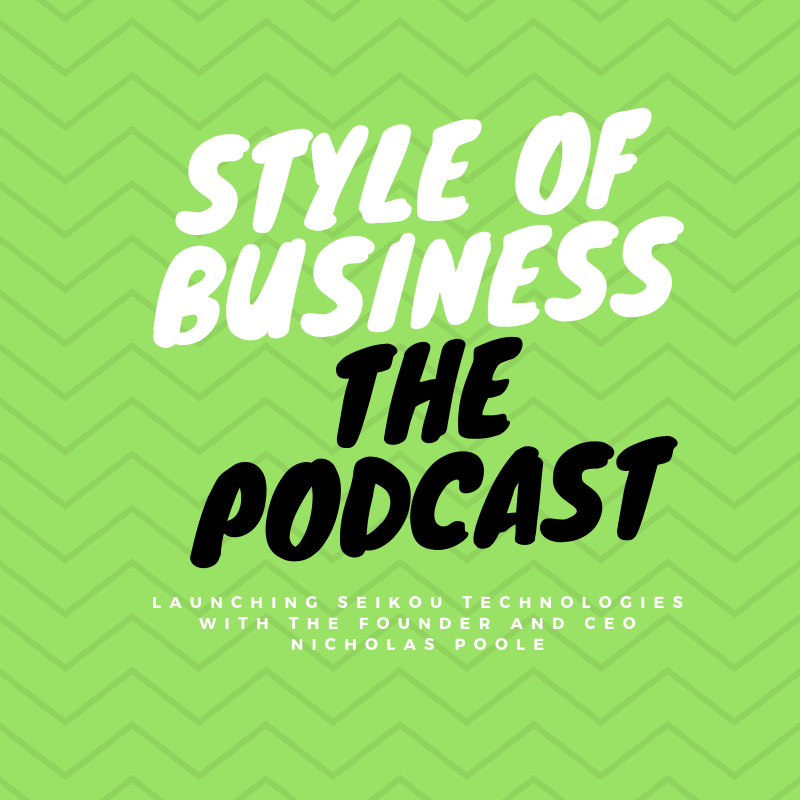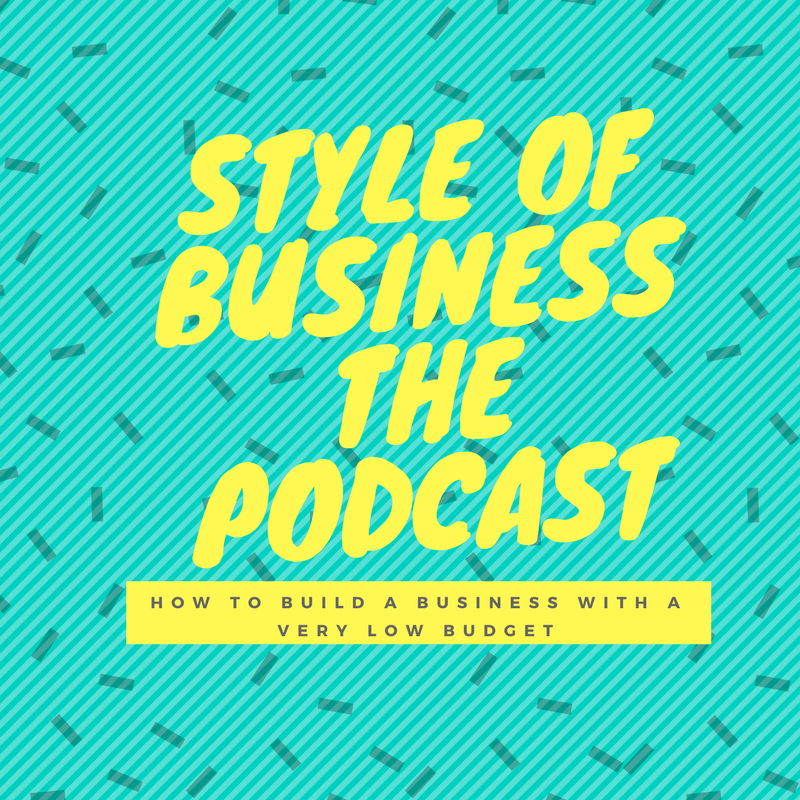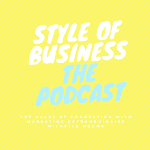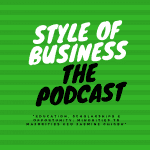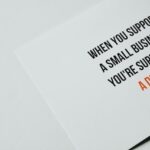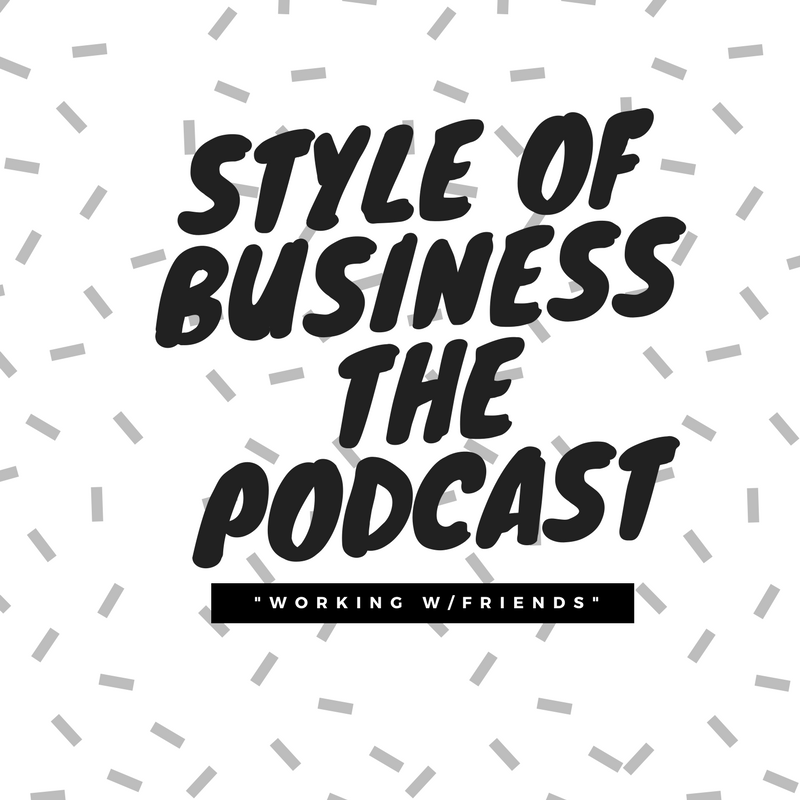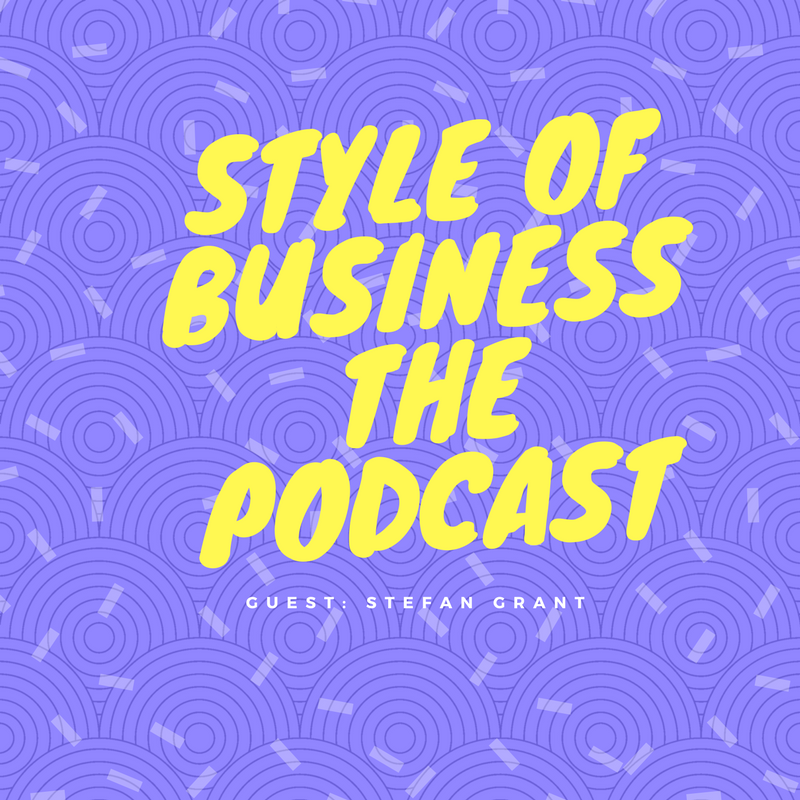
Branding is an important part of business marketing…but what are you supposed to do when you’re just starting out and don’t have the capital to put behind a killer branding campaign?
The good news is that you don’t have to be a business bigwig to create branding that really sings. The Internet has especially made branding easier than ever, and marketing yourself online is now cheap and easy thanks to these tools.
I can offer a million budget branding tips, but let’s start out with these four important pieces of advice:
- Newsletters
One thing I always say about branding is that the time you invest will always be more important than the money you spend. A consistent brand is one that works hard to create and maintain their image and personality. Sending out newsletters to an email list may not seem like the best way to brand in the short term, but the long term effects are certainly worth it.
You already have someone on the hook with your company. Even if they ignore a lot of your newsletters, it’s sometimes enough to regularly show up in a consumer’s inbox. This keeps you familiar to them, and those who do click regularly will get a taste of your consistent branding every time.
- Customer Insights
Sometimes the best branding opportunities don’t even come from you directly. Customers you have that are happy with your services will gladly say so, and this is something you can leverage.
Whether through user generated content or testimonials, customers showcase how they feel about your brand in a positive way. This kind of human feedback creates credibility among other potential customers online. A credible brand is a brand that succeeds because they’ve proven their value to not just the customers they already have, but to the world at large.
- Social Media
This should go without saying, but social media will always be your easiest and most inexpensive format for branding. Many associate market with social media more than they do branding, but brand identity and social media go hand in hand.
We can define marketing as purposefully trying to attract customers, while branding is something that is more subtle and subconscious. A brand is an identity, not an action – more aptly, it is the intention behind that action and what that action means. Things like personality and values can be communicated through interacting and posting on social media with a brand’s voice as the vehicle.
- Work with Amateur Freelancers
Freelance graphic designers just starting out are looking to fill up their resumes with work in order to get bigger clients and show their areas of expertise. If you’re looking for a logo or something related to web design, amateur freelancers are out there, ready and willing to give you decent work at an incredible price.
You don’t have to spend big to get a nice, simple logo produced. It’s also possible to refurbish your branding later on down the line when you have more capital to invest.
You might be interested in
Branding isn’t easy. Some assume that it’s just slapping a logo onto a product and calling it a day, but
You’ve spent a lot of time building your brand messaging stock…but is it actually doing anything for you? If you
Focus on delivering the whole nine yards In the age of multiple social media websites and opportunities for people to
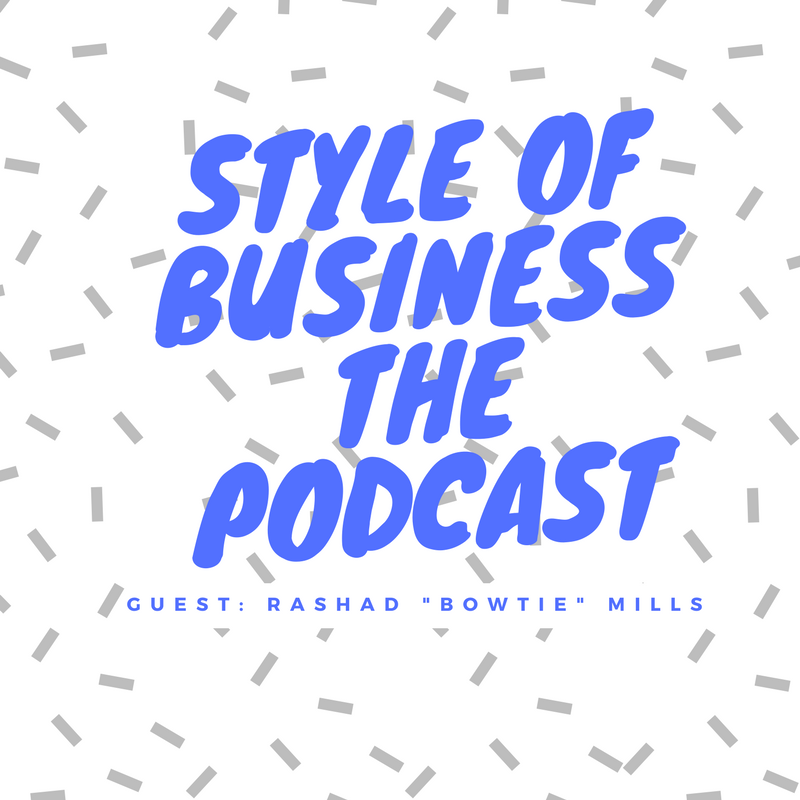
You might be interested in
Being an entrepreneur is an exciting and challenging journey, but it’s not without its difficulties. I’ve learned many lessons along
Starting your own business can seem daunting if you’re new to entrepreneurship and entrepreneurial journey. It’s common to feel overwhelmed
Entrepreneurship is one of the most rewarding careers out there, but it can also be one of the most stressful.
Marketing should never be something you have to break the bank for, especially in this day and age when the Internet can give you access to numerous tools and vehicles for marketing yourself cheaply. This can actually be something a problem, though — there are so many different ways to market yourself online, many entrepreneurs who are just starting out don’t exactly know where to start.
Never fear. I’ve got four inexpensive ways to market yourself online with little tips and tricks for how to do so in the most valuable way possible.
- Social Media
First and foremost, social media should be your go-to marketing vehicle. It’s essentially free unless you want to invest money into it, and even then the capital required is small — especially for the return on investment.
You’ll need to establish which social media sites suit your business. For instance, your jewelry ecommerce store may not benefit from LinkedIn like it would from Instagram or Pinterest. Then find inventive ways to promote yourself on these social sites, like coupon codes or freebies. Always pay attention to your engagement on social media: who is talking to you, and are you talking back?
- Online Reviews
Online review sites are a great way to market yourself cost effectively, mostly because you’re not even really doing the work involved! Always make a point to ask your customers to post reviews of your service — make things simply by including it in your site or email copy. The site you choose should coincide with your business theme. Sites like Yelp and a Google My Business page can do wonders for your word of mouth marketing capabilities.
- Blogging
A business blog can help you market your brand, boost your SEO AND give you great visibility — so why aren’t you doing it yet? Consider things like partnering with an influencer or related company to double your visibility while promoting valuable content. Your blogs are also a great way to market your business in a subtle way, like talking about the benefits of your business in an otherwise informative article.
Your blog can also act as your on-site press room. When you have news you want to share, do it via a blog post! Then share that blog post on social media for maximum results. This takes little to no capital, and blog posts are cheap if you want to outsource them.
- Put Yourself Out There
Online marketing is essentially finding ways on the Internet that put your brand in the spotlight. Doing things like answering Quora questions our joining industry relevant forums can promote you as a thought leader while also boosting your brand within the public consciousness.
Always be innovative and look for opportunities. I can’t give you all the advice you’re looking for because I don’t know what opportunities may come your way. The best marketing advice I can give you is to stay hungry and always keep a watchful eye out for ways to promote yourself online. It’s easier to find cheap marketing vehicles than you may think.
You might be interested in
How do you brand yourself online? A better question might actually be this one: do you brand yourself online in
Branding yourself or your company through social media is not difficult to accomplish when the right strategies are employed. Below
You might be interested in
Entrepreneurship is one of the most rewarding careers out there, but it can also be one of the most stressful.
We speak with speaker, author, and marketing consultant Michelle Ngome – Founder and CEO of Line 25 Consulting. We talk
In episode 58 Keetria talks with Jasmine Chigbu, CEO and Founder of Minorities to Majorities. Jasmine´s goal is to make
Branding takes finesse. It takes a fine eye, an understanding of the market and a savvy account of what consumers really want. You would think well-established companies had these bases covered…but the sad truth is that everyone has a blind spot.
If there’s one thing you need to learn from other businesses, it’s what NOT to do. You’ll find you learn a lot more from someone’s branding disasters than their branding successes.
Gap’s Major Mistake
One thing that’s important to keep in mind is that iconic logos probably shouldn’t be altered or tampered with. In the case of fledgling businesses, pick a logo that works and stick with it.
Gap did exactly the opposite of that in 2010. Despite being a company with a logo that’s iconic to the brand, Gap decided that some change was necessary moving into the new decade. They swapped their white-text-on-blue-square logo for black text on a white background with a small blue box. The new look was dated and out of sync with their image. In the end, the disaster cost them big bucks.
Bust Buy
Another company with an iconic logo, Best Buy, tried to change their image up in 2008. You may not remember the new look simply because it lasted for only a few weeks. Switching from their black text/yellow price tag look to a more minimalist design didn’t actually fare well for the company. The new design was clunky and didn’t utilize space well.
The lesson to learn here is always be aware of your design skills. If you aren’t capable of designing a winning logo, look elsewhere and don’t be ashamed. If even companies like Best Buy can have graphic design misses, you’re allowed to have a few too.
I’m Not Even Sure
Intrigued by that subheading? You might be even more intrigued by the actual logo itself. Without reading the text, what kind of company do you think would inspire this kind of squid-like disaster?
The reality is that Cottbus is a German city. The city, looking to rebrand themselves, created a contest that awarded 800 euros to the winner. This was the design that was selected, though the city soon realized their mistake. They’ve since rebranded after Internet users turned their new logo into the newest meme. What can you learn from this? It’s simple: don’t make obviously bad decisions.
If it Ain’t Coke…
…don’t fix it. However, Coca Cola has attempted to do this multiple times. While their can design changes have been welcomed more often than not in recent years, the iconic beverage company has tried over and over again to sell a new formula of their drink.
If there’s one thing Coca Cola doesn’t need to adjust when it comes to branding, it’s their product. They have a winning recipe, but of course any brand as old as theirs will want to switch things up now and again. Your takeaway is this: know what should change and what should stay the same.
You might be interested in
Not every branding idea you come up with is going to be a winner – and that’s not necessarily a
What exactly is a lifestyle brand? On one hand, a lifestyle brand is a brand identity that focuses on the

You might be interested in
Entrepreneurship is one of the most rewarding careers out there, but it can also be one of the most stressful.
We speak with speaker, author, and marketing consultant Michelle Ngome – Founder and CEO of Line 25 Consulting. We talk
In episode 58 Keetria talks with Jasmine Chigbu, CEO and Founder of Minorities to Majorities. Jasmine´s goal is to make

The next time you’re worried about your own struggles as a female entrepreneur, look to these shining examples of female power.
Sarah Blakely
If you’ve ever tugged on a pair of Spanx, you have this woman to thank. Known as one of the wealthiest entrepreneurs in business, her shapewear invention has earned her $1 billion in profit over the years. Thanks to her inventive mind and a need for better undergarment options, Blakely cut up a pair of pantyhose and created the most innovative underwear since the push-up bra. Since her iconic invention, Blakely has created a privately owned company and has diversified into jeans and yoga materials.
Mary Kay Ash
If you’ve never heard of Mary Kay Cosmetics, you may have been living under a rock. Founder of the iconic makeup brand, Ash originally created her company in 1963. Ash married at 17, had three children with her first husband and then divorced him in 1945. She founded her makeup company in 1963, one month after the death of her husband that she had intended to go into business with. Despite her situation, Ash persevered and established herself as an incredible entrepreneur.
Sheryl Sandberg
Don’t immediately recognize this name? You may have read her critically acclaimed book “Lean In,” or you might frequent the little social media site that she’s the COO of: Facebook. One of the things Sandberg champions is female empowerment and entrepreneurship. Sandberg loves giving back to the community, even when faced with extreme hardships, like the sudden death of her beloved husband.
Arianna Huffington
Signed on as editor in chief of The Huffington Post through 2019, Arianna Huffington is one class act. Creating a blogging aggregate turned credible news site, Huffington has paved the way for budding journalist and thought influencers by giving them a great and wide platform to host their content. Huffington has had her ups and downs throughout her career, but she’s definitely come back swinging every time.
Jenny Craig
It’s hard to maintain a steady place in the weight loss industry, but Jenny Craig has been successful at being on top since she began her eponymous company. If there’s one thing to learn from Craig, it’s that adaptation is key to staying alive in business. Her company has changed throughout the years, keeping current and up to date with weight loss trends as they shift and evolve. Since the company was founded in 1983, Craig has branched out from Australia to over 700 weight management centres around the world.
You might be interested in
The ability to innovate, adapt, and deal with obstacles creatively is often the key to success in the rapidly changing
In a world where 20% of new businesses fail during the first two years of their operation, it is crucial
It’s been an exhilarating and transformative decade for the Co-Founder of ARCG Media celebrating, Rob Aurelius, who has embarked on
Before you lay down any solid ground work for your business, you have to come up with a brand. Why is this such a quintessential step? Because your brand is your business’ soul. It’s the personality that separates it from the rest of the crowd. Without a discernable, unique, vivid brand, your business is an empty husk.
However, creating a brand from scratch is a tricky task. No one ever said branding was easy, but it is rewarding…still, it’s only fulfilling if you know how to do it the right way. Otherwise you’ll have a lot of balled up scratch paper sitting haphazardly around you office trash can, covered in half-baked ideas that don’t go anywhere.
Like all artforms, branding comes from an idea — an inspiration. In order to cultivate that inspiration, you have to ask yourself these three important branding questions. If you don’t know the answers, you don’t have anything close to a workable brand.
Question 1: Why do you want to create this company or business?
This may sound like a simple question, but try to answer it in short-form essay format. It’s not enough to say “to sell stuff” or “to make a quick buck” even if those answers are true. No, branding requires something a little more raw and personal than that.
Say you want to start a business selling a new type of food tray for toddlers and infants. This might be your quick idea at a cash cow, but think of the brand itself: what does that type of product say to consumers? It’s a helpful product, meant to nurture infants and appeal to frustrated, tired mothers. This kind of branding image should be soft and maternal — maybe rounded and green in color.
Branding comes about when you truly get to the heart of why a business exists and what the product gives to people. This is the heart of any good branding schematic.
Question 2: How do you appeal to your audience?
Revisit the above toddler food tray example. For a product like this, the beneficiary is actually the mother even though the baby is using the tangible item. You’ll notice marketing shifts like this based on who the consumer is, not who the recipient is. Toddler’s TV shows appeal to both mother and child because both audiences consume the content, while only the mother is the true consumer of the feeding tray. In these examples, the toddler receives the product but the branding is different based on the audience.
You have to learn what your audience wants and how to appeal to them? Who is your audience? How does your branding work to identify with their needs?
Question 3: Does your branding leave room for growth and development.
Let’s look at that example one last time. You start out manufacturing baby trays, but maybe one day you’ll want to expand to include more baby-related items to your product line…does your current branding allow for this?
Products are products, but brands are brands. A good branding concept leaves room for expansion. Coca Cola isn’t just Coke Zero — the former is the branding umbrella, while the second is a specific product that can be branded.
Thus, it’s important to give yourself a general concept that leaves room for growth. Think of it as planning for your business future.
You might be interested in
Is your brand stagnating? Are you having trouble getting your branding to a place where you want it to be?
The Appeal of Hordes following your brand As the purveyor of a brand, you would honestly love almost nothing more

